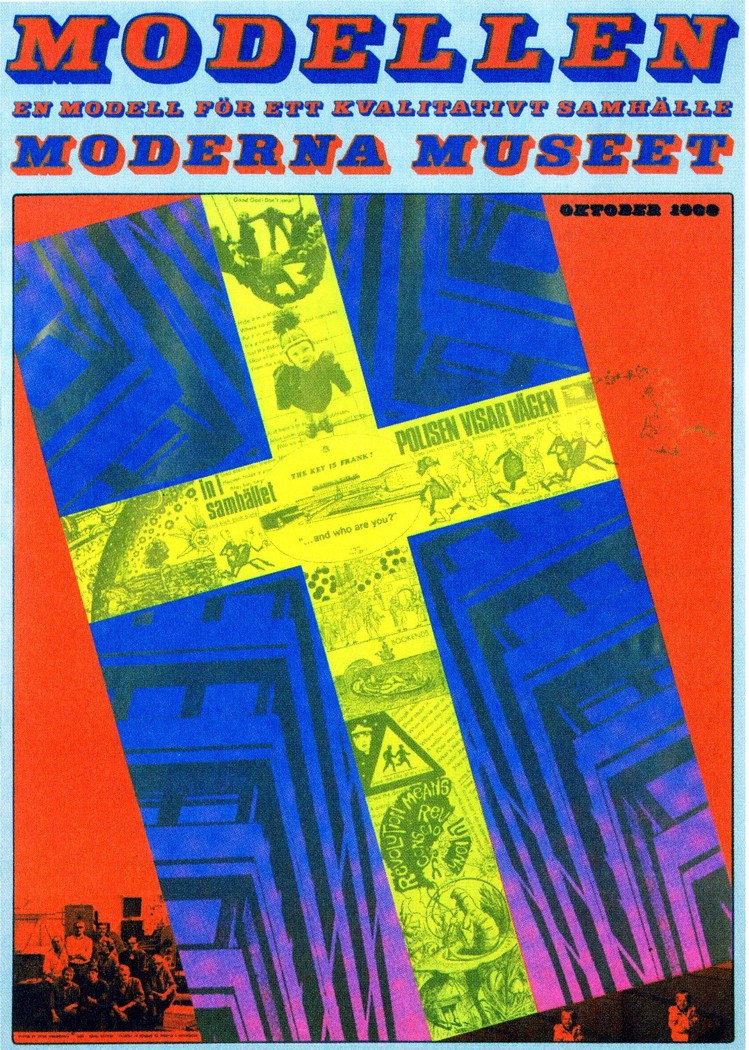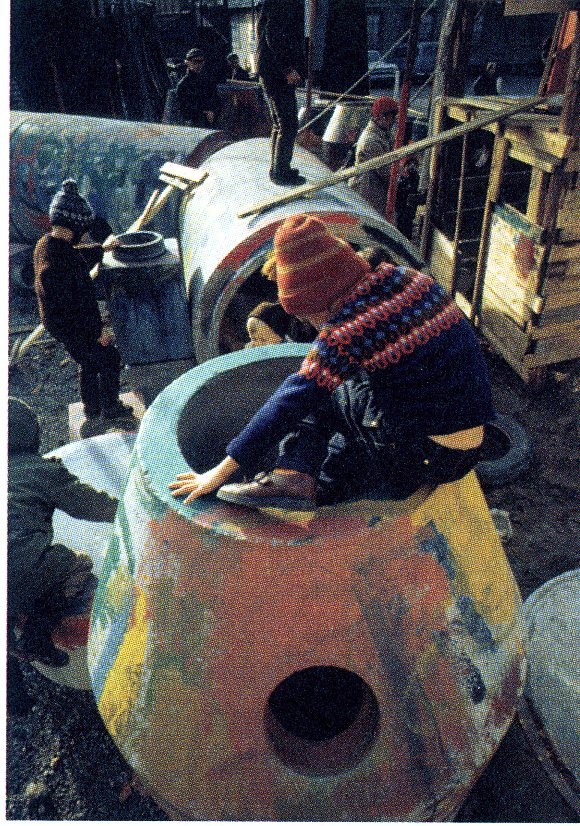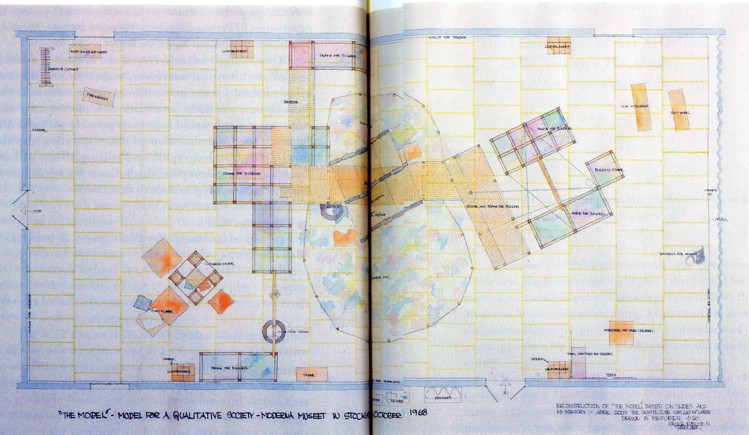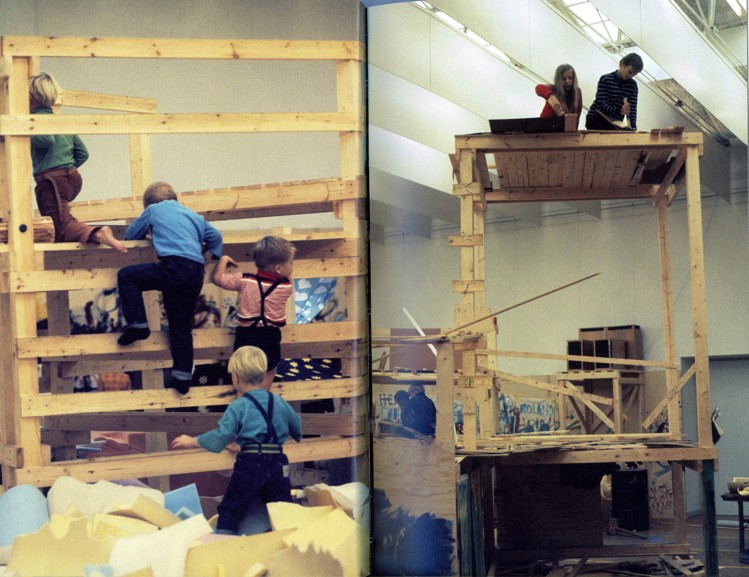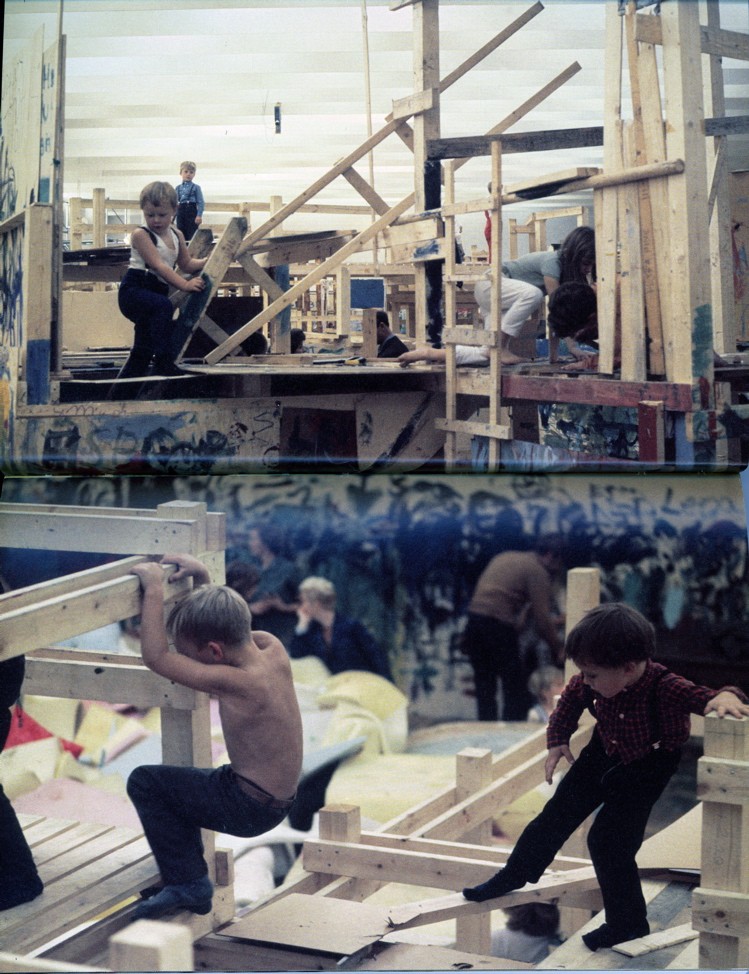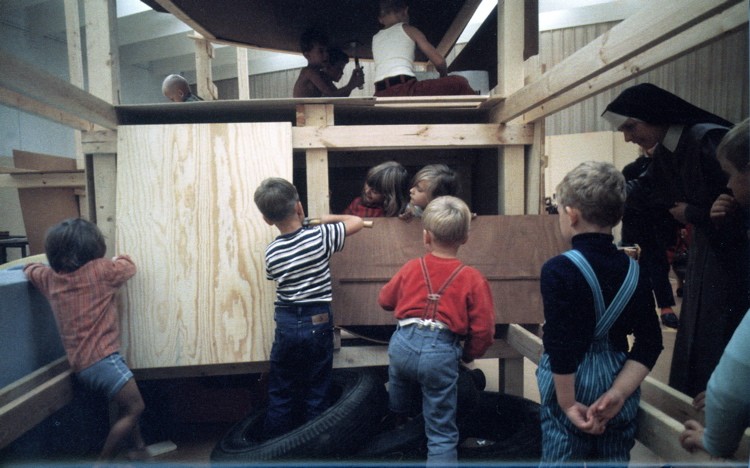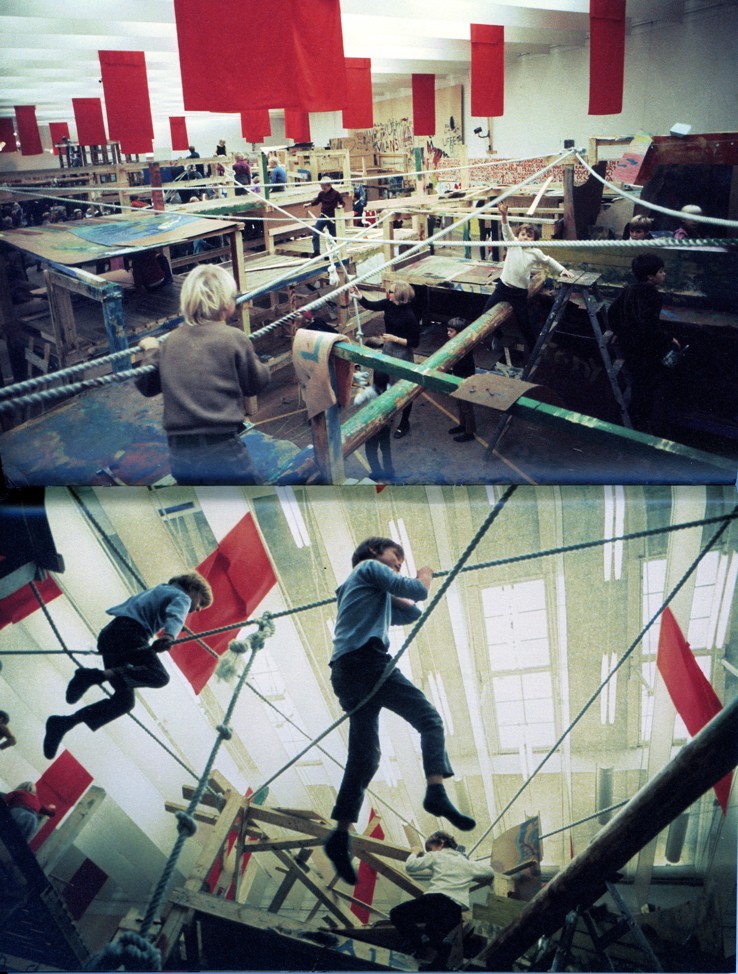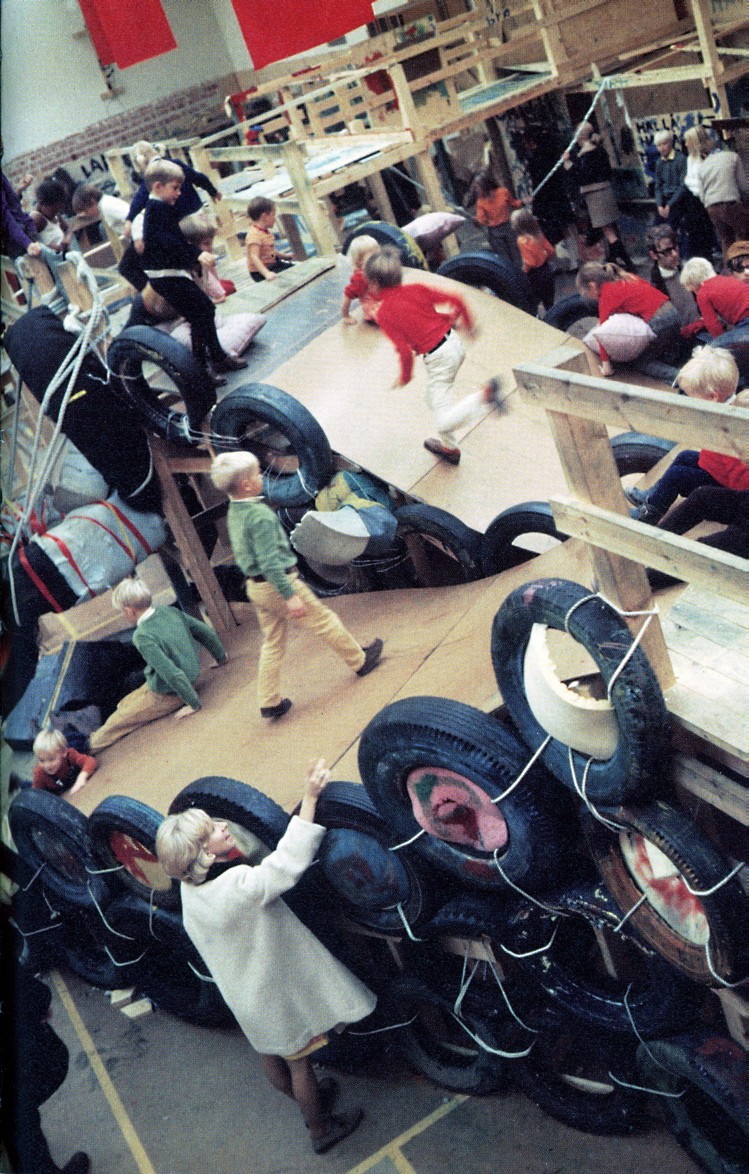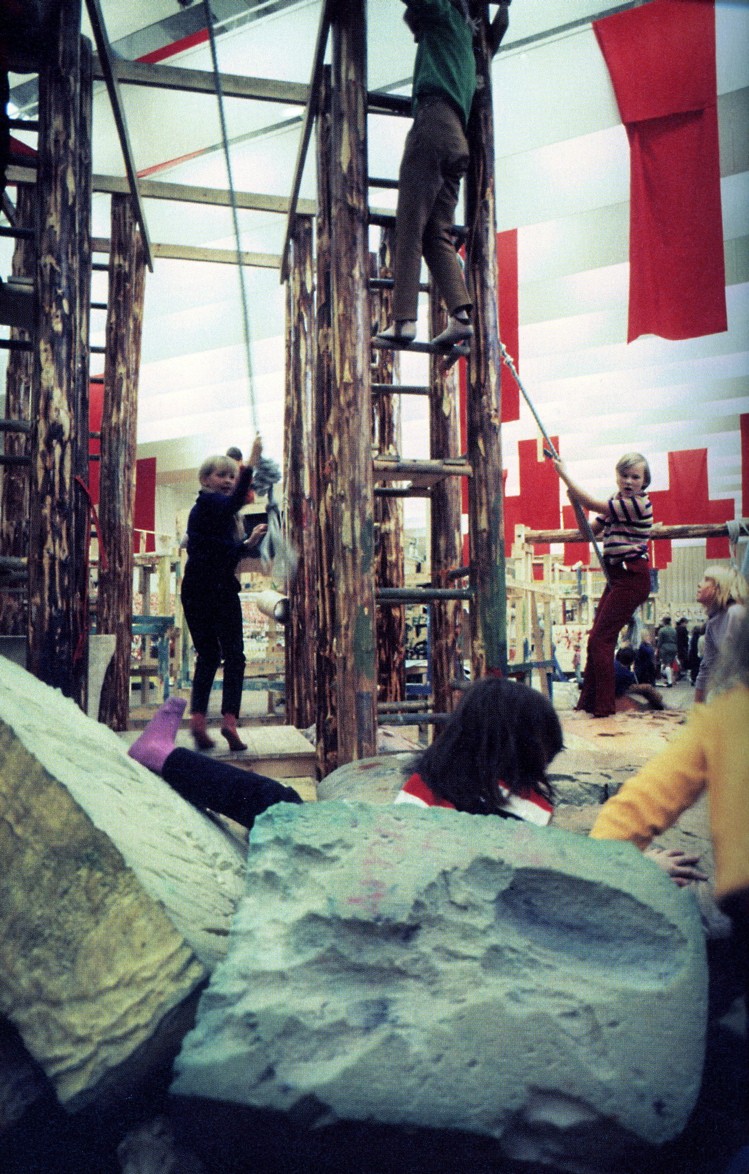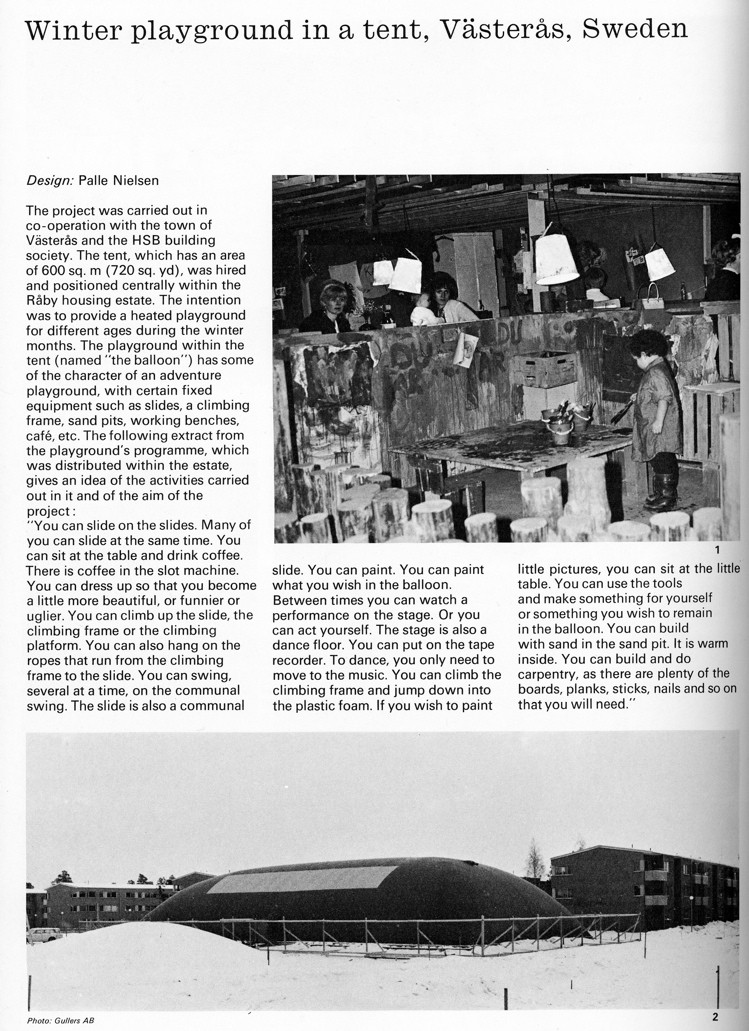The Model – a model for a qualitative society, at Moderna Museet Stockholm, September 30-Octobre 20, 1968
Modellen was a joint action between Danish artist and activist Palle Nielsen, and the urban action group Aktion Samtal in Stockholm. In the Summer of 1986 Aktion Samtal initated a series of actions, to challange a deteriorating urban environement. Palle Nielsen was part of a highly active urban activist scene in Copenhagen. On the occasion of a visit in Stockholm, he came up with the idea to organize an action at Moderna Museet. They received free reign by the director and debuty director to mount a project in the main hall of the Museum. A group of volunteers consisting of artists, designers, theatre people and writers built the 660 m2 playground. During three weeks, from 30 September to 20 October 1968, 35,000 spectators, 20,000 of them children, visited Modellen; children and tennagers under 18 had free entry. A maximum of 380 children could visit the exhibition per hour.
To keep the waiting children occupied, a temporary playground was set up at the entrance. At the end of the second week, Stockholm Fire Departemnt ordered the closure because the foam was allegedly highly flammable. In four days, the foam was remoaved and the exhibition rebuilt and then reopened with political graffiti and red fabric banners on the ceiling. (Larsen, pp. 40-64)
The exhibition poster was designed by Sture Johannesson (born 1935) pioneer of psychedelic graphic design and later computer-generated art, Sweden.
To raise enough money, the project was set up as a research project. The project description states:
[…] The reason for making an educational exhibition at the Moderna Museet is the following: the debate about new art has increasingly developed into a debate about environment. The individual work of art is becoming less interesting. It is the context, the social implications that are moving to the foreground. […] A communicating environment that activates people is the logical outcome of this line of work… The idea is to further explore the following hypothesis: children’s patterns of play vary with changes in the physical framework for their play, and there is a positive connection between the degree of variation in the playing unit and the satisfaction of the children’s physical and sensory need. […] The frame itself is conceived as being built of wood, including many spatial formations and bridges. The frame will contain no fixed play functions – only the children’s use of it will determine its function. The frame is also aimed at making the space more unpredictable. […] Clothes for dressing up and paint will become an essential part of the sensory group experiences. In the same way, wood and tools will be provided with which to further process the frame.
The “ Balloon“ in Västerås
After Modellen ended, Nielsen announced in a newspaper interview that the playground was for sale to a municipality. Kerstin Oswald who worked at HSB (a cooperative housing association) inVästerås, a municipality in the Northwest of Stockholm, to buy Modellen and install it there. „The Balloon“ was closed in spring 1969 under protest from the residents after the real estate company withdraw the funds. (Interview with Gunilla Lundahl, p.130)
Child’s Play : Toying with the White Cube by Lars Bang Larsen in Frieze Issue 51 March-April 2000
Quelle und Zitate: Lars Bang Larsen: Palle Nielsen : The model. A model for a qualitative society (1968), Museu d’art contemporani de Barcelona, 2009.
Arvid Bengtsson: Environmental Planning for Children’s Play, Praeger Publishers New York, 1970
Lars Bang Larsen and Maria Lind: Interview with Gunilla Lundahl, in: The New Model: An Inquiry. Tensta Konsthall, ed. by Maria Lind and Lars Bang Larsen, Sternberg Press, 2020.
erstellt am 28.7.2011
angepasst am 10.6.2012; 4.9.2012, 30.11.2021
